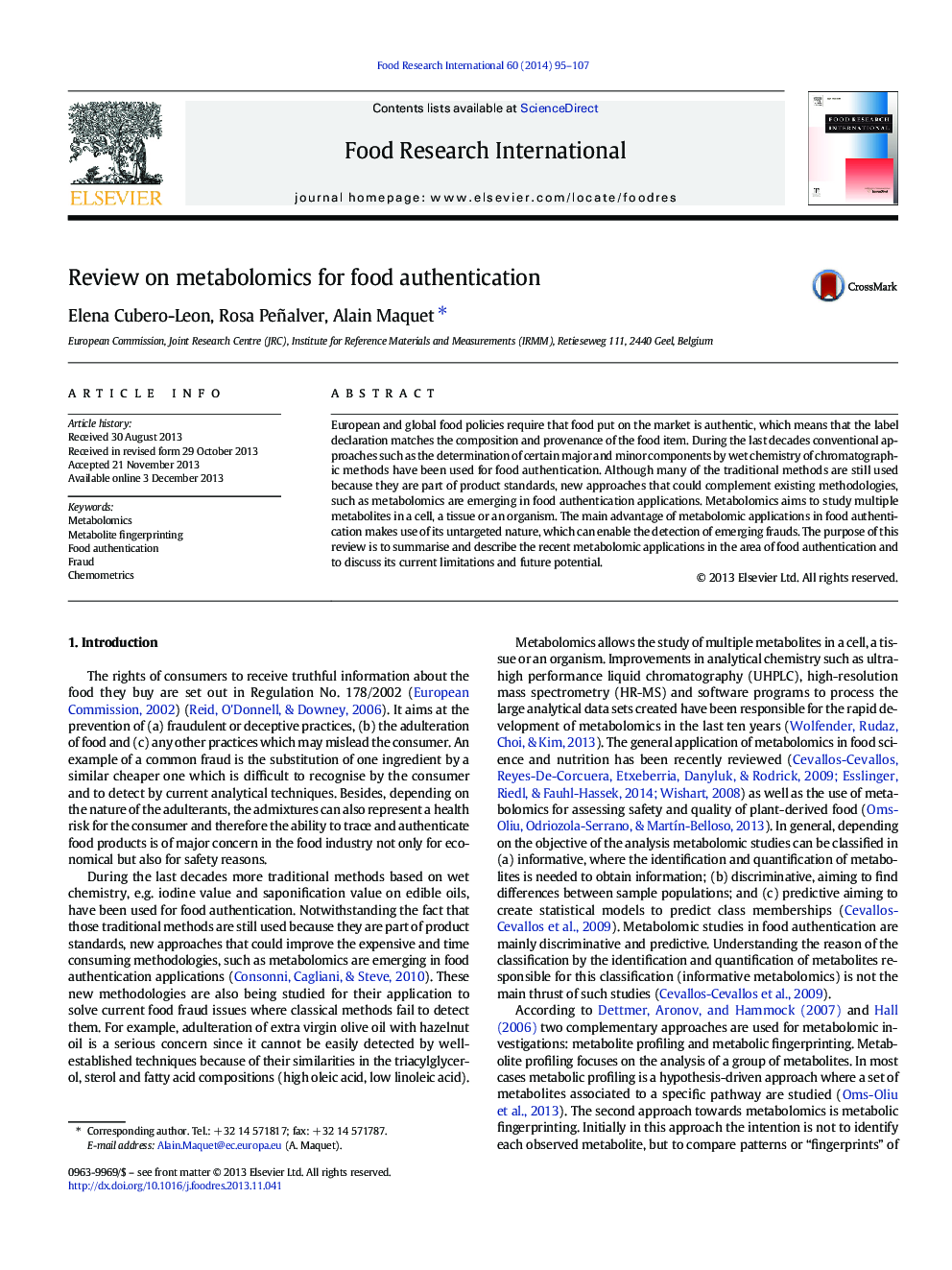| Article ID | Journal | Published Year | Pages | File Type |
|---|---|---|---|---|
| 6396475 | Food Research International | 2014 | 13 Pages |
â¢The general workflow used in metabolomic studies is described.â¢Food authentication issues are presented.â¢Recent metabolomic applications used for this purpose are highlighted.â¢Advantages and limitations on the use of metabolomic applications are discussed.
European and global food policies require that food put on the market is authentic, which means that the label declaration matches the composition and provenance of the food item. During the last decades conventional approaches such as the determination of certain major and minor components by wet chemistry of chromatographic methods have been used for food authentication. Although many of the traditional methods are still used because they are part of product standards, new approaches that could complement existing methodologies, such as metabolomics are emerging in food authentication applications. Metabolomics aims to study multiple metabolites in a cell, a tissue or an organism. The main advantage of metabolomic applications in food authentication makes use of its untargeted nature, which can enable the detection of emerging frauds. The purpose of this review is to summarise and describe the recent metabolomic applications in the area of food authentication and to discuss its current limitations and future potential.
